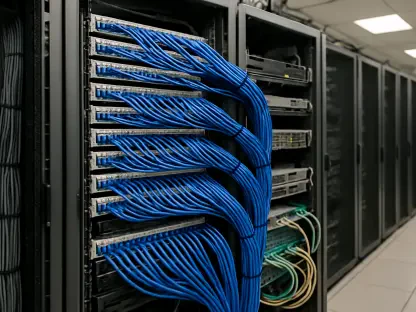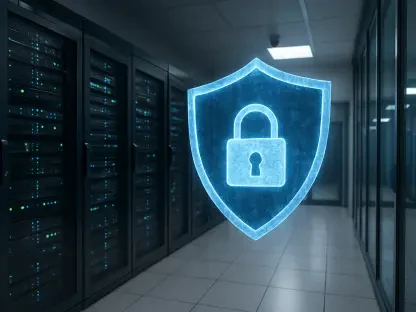Zscaler, Inc. (NASDAQ: ZS), a leader in cloud security, recently announced its new Zero Trust Segmentation solution, marking a significant evolution in enterprise connectivity security. This innovative approach aims to enhance security across various environments, including branches, factories, campuses, data centers, and public clouds. By eliminating the complexities and vulnerabilities associated with traditional network components such as firewalls and SD-WANs, Zscaler’s solution promises a higher level of security, agility, and cost-effectiveness.
Addressing the Shortcomings of Traditional Network Security
Traditional network extension methods like SD-WAN and site-to-site VPNs have widened enterprise connectivity but also inadvertently facilitated ransomware propagation. Firewalls, typically used for segmentation, face challenges in security adequacy, complexity, and increased costs. Zscaler’s Zero Trust Segmentation solution addresses these shortcomings by fortifying against ransomware and simplifying network environments. This novel approach operates under a Zero Trust architecture, ensuring that organizations do not need their corporate networks to extend from the data center to diverse, distributed locations. Instead, each location becomes a virtual island, communicating directly with the Zscaler cloud security platform via any broadband connection. This method significantly minimizes attack surfaces tied to public IPs, curbing ransomware spread, and obviating several traditional network components.
The innovative Zero Trust Segmentation by Zscaler transforms network security by eliminating reliance on legacy firewalls and site-to-site VPNs, which have become traditional cornerstones in securing enterprise networks. However, these components have also brought about increased complexity and vulnerabilities. Zscaler’s architecture allows each location, whether a branch, campus, or factory, to function as an independent entity that maintains secure connections to the cloud platform, drastically reducing potential entry points for cyber threats. This decentralized approach to network security not only enhances protection but also simplifies the overall network structure, making it easier to manage and maintain.
Leveraging AirGap Technology for Enhanced Security
A critical aspect of Zscaler’s announcement is the integration of technology from its recent acquisition of AirGap. This technology delivers robust defense against ransomware and reduces deployment timelines to mere days. According to Dhawal Sharma, EVP of Product Management at Zscaler, this solution integrates cutting-edge technology to offer superior protection compared to traditional methods that often become never-ending projects due to their complexity. Zscaler’s solution also promises considerable cost savings. By eliminating the need for legacy firewalls and complicated infrastructures, organizations could achieve up to 50% cost savings. This is particularly enticing for security leaders and executives prioritizing streamlined, secure, and economically efficient IT environments.
The use of AirGap technology underscores Zscaler’s commitment to embracing innovative solutions that address contemporary cyber threats. The integration of this technology enhances Zero Trust Segmentation’s ability to preemptively defend against ransomware attacks, which are increasingly sophisticated and damaging. Traditional network security methods often struggle with the pace at which these threats evolve, leading to prolonged and complex projects that drain resources. Zscaler, by leveraging AirGap, not only quickens deployment but also ensures that the network security framework remains robust and adaptive to emerging threats. This forward-thinking approach aligns with the demands for rapid, efficient, and cost-effective cybersecurity solutions in today’s digital landscape.
Securing IoT and OT Systems in Modern Enterprises
Today’s branch offices and factories see an increased prevalence of IoT devices and Operational Technology (OT) systems. Modern reports from Zscaler’s ThreatLabz indicate that more than half of OT devices employ outdated operating systems with known vulnerabilities, making them easy targets for attacks. Zscaler’s Zero Trust Segmentation can secure such devices promptly—without dependence on north-south firewalls—demonstrating its effectiveness in diverse environments. Customer testimonials further reinforce the solution’s practical benefits. Brian Morris, CISO at Gray Television, emphasized the transformation brought about by Zscaler Zero Trust Branch, citing reduced network costs and cyber risks along with faster integration of mergers and acquisitions (M&A).
Securing IoT and OT systems within modern enterprises presents unique challenges due to their increasing complexity and vulnerability. The proliferation of these devices in operational environments has expanded the attack surface, exposing critical systems to potential cyber threats. Zscaler’s approach provides a seamless solution, enabling organizations to safeguard these devices without the traditional reliance on cumbersome firewall setups. The swift adaptability and security coverage that Zero Trust Segmentation offers are critical in maintaining the integrity and functionality of IoT and OT systems. This proactive stance on securing emerging technologies ensures that enterprises remain one step ahead of potential threats.
Enhancing Security in Data Centers and Public Clouds
Zero Trust Segmentation is also essential for data centers and public clouds. Relying on firewalls for workload communications in hybrid and multi-cloud environments introduces risks and complexity. Each internet-facing firewall presents potential attack surface vulnerabilities and may lead to inconsistent threat protection due to the disparate operations of different cloud service providers. Zscaler’s solution standardizes cloud security across various interactions in hybrid and multi-cloud settings, eliminating the need for firewalls, site-to-site VPNs, Direct Connect, and ExpressRoute while simplifying and securing operations.
Shanker Ramrakhiani, CISO at IIFL, underscored the significance of Zscaler’s Zero Trust Cloud for securing cloud workloads, ensuring consistent security across data centers and multiple clouds, simplifying operations, and significantly mitigating lateral threat movement. The expansive nature of data centers and public clouds demands robust and consistent security measures. Zscaler’s solution provides an overarching security architecture that ensures seamless protection across different cloud platforms, mitigating the risk of lateral threats that can manifest in multi-cloud environments. By standardizing the security protocols, Zscaler alleviates the potential discrepancies that often arise when different clouds operate under varied security measures. This not only fortifies the network against potential breaches but also streamlines operations, reducing the burden on IT teams tasked with maintaining a secure multi-cloud environment.
Future Prospects and Broader Platform Support
Zscaler, Inc. (NASDAQ: ZS), a leading company in cloud security, has recently launched its innovative Zero Trust Segmentation solution, representing a major advancement in enterprise connectivity security. This cutting-edge solution is designed to improve security within a variety of settings, including branches, factories, campuses, data centers, and public clouds. By removing the complexities and vulnerabilities that are common with traditional network components like firewalls and SD-WANs, Zscaler’s new offering ensures a superior level of security, agility, and cost-efficiency. This Zero Trust framework redefines how businesses protect their networks by ensuring that only authenticated and authorized users can access specific resources. The strategic move by Zscaler underscores the company’s commitment to delivering next-generation security solutions that enable seamless and secure connectivity across diverse environments. The Zero Trust Segmentation solution not only simplifies network architecture but also eliminates the risk of lateral movement of threats, reinforcing the overall security posture of enterprises.









